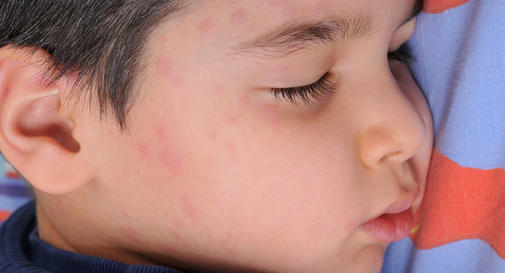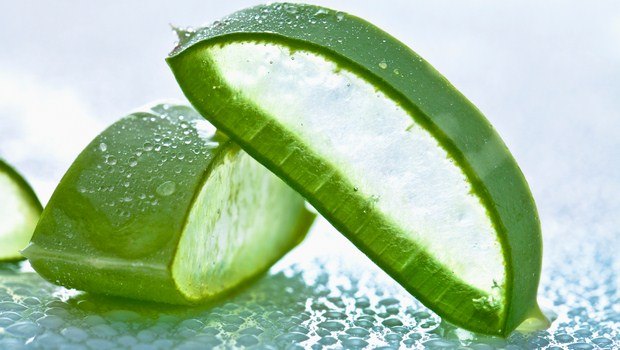Hives, known as urticaria in medical language, are the red, raised and itchy rashes that may be of different shapes and sizes. Appearing anywhere on the body in both adults and children, it may last from 6-12 hours and may even extend to 24 hours but usually do not last more than a day. The rashes can also sometimes give a burning or stinging sensation.
Here are the types, causes, symptoms, diagnosis and treatment of hives.
Types Of Urticaria

Hives or urticaria can be of two types: acute and chronic. The most common type is acute urticaria. Its symptoms last less than 6 weeks and usually affect face, neck, fingers and toes but other body parts can also be affected. Chronic urticaria lasts for over 6 weeks. Nearly one in every 1000 people experience this type of urticaria.
The exact cause remains unknown but it may be associated with immune system. The viruses can trigger them and sometimes they are also linked to an underlying autoimmune disorder such as thyroid disease or lupus.
What Triggers Hives?

Hives takes place when the body reacts to an allergen and histamine and other chemicals are released beneath the skin’s surface. The histamines and chemicals cause skin inflammation and accumulation of fluids under the skin causing wheals.
Some of the triggers include:
-
Insect bites and stings
-
Dust mites
-
Medicines including some antibiotics and non-steroidal anti-inflammatory drugs
-
Latex, pollen
-
Extreme body temperatures
-
Certain plants and chemicals
-
Scratching
-
Bacterial infections
-
Exposure to sunlight
-
Exercise
-
Moist skin
-
Chronic illnesses like thyroid disease or lupus
-
Certain foods that trigger histamine production
-
Emotional stress
In almost half of cases, causes of urticaria is unknown and unclear.
Signs & Symptoms

The bumps in hives (also known as wheals) can be seen as a rash on the skin. They are typically pink or red and have an oval or round shape. Their size may range from a few millimeters to many inches. They can feel really itchy and have a red flare around them.
The wheals mostly occur in batches, frequently on the face or the extremities, including the arms, hands, fingers, legs, feet, and toes. The welts normally go away within 24 hours, but new ones may develop. They may appear on just one body part or on different body parts.
Symptoms tend to disappear within a day, but sometimes another weal may appear after the last one fades. In certain cases, hives can continue for many days. People who have chronic hives can experience symptoms for months or even years.
Diagnosis Of Hives

For diagnosing hives, a doctor might need to ask questions in order to know the possible causes of hives. As there are no specific tests for hives, the tests will depend on your medical history and a complete examination by your primary care doctor or dermatologist.
Several skin tests may be carried out for determining the allergen (substance you are allergic to). Regular blood tests allow you to know if a system-wide illness is prevalent.
Preventions, Home Remedies & Medicinal Treatment For Hives

The triggers don’t cause the problem but they can worsen the symptoms so sufferers must try to identify them and avoid them. Some preventions include:
-
Avoiding certain medications
-
Abstaining from alcohol
-
Avoiding stress and tackling it with meditation or relaxation techniques
-
Using mild soaps, skin creams and detergents
-
Avoiding certain foods that trigger histamine production including spinach, fish, yogurt, fish, tomato, processed, meats, chocolate and strawberries.
Some simple tips and home remedies for reducing the irritation caused due to hives:
-
Wear loose and light clothing
-
Avoid scratching
-
Take an oatmeal bath with lukewarm water
-
Use a shower, fan, or cold water for cooling the area
-
Supplements like quercetin and evening primrose oil, and vitamin C, D and others are recommended. It’s better to consult a doctor before using these
supplements as they can trigger harmful reactions. -
Aloe Vera, nettle, ginger, baking soda, turmeric, basil and mint have anti-inflammatory properties and so they help in relieving hives
The treatments for acute urticaria are non-sedating antihistamines. They are taken on a regular basis for several weeks. Antihistamines like cetirizine or fexofenadine help block the effects of histamines and reduce the rash and stop the itching. If these bumps occur on tongue or lips or in case it gets hard to breathe, the doctor may prescribe an epinephrine auto-injector like EpiPen in emergency cases.
Image Source:
1. askdrshah
2. allergyandasthmaclinicalcenters
3. babycenter
4. healthline
5. vkool

